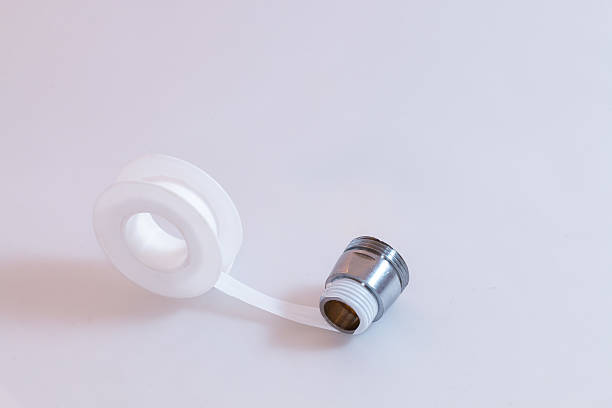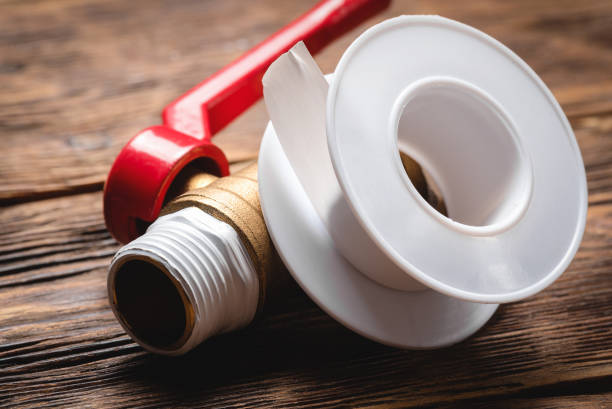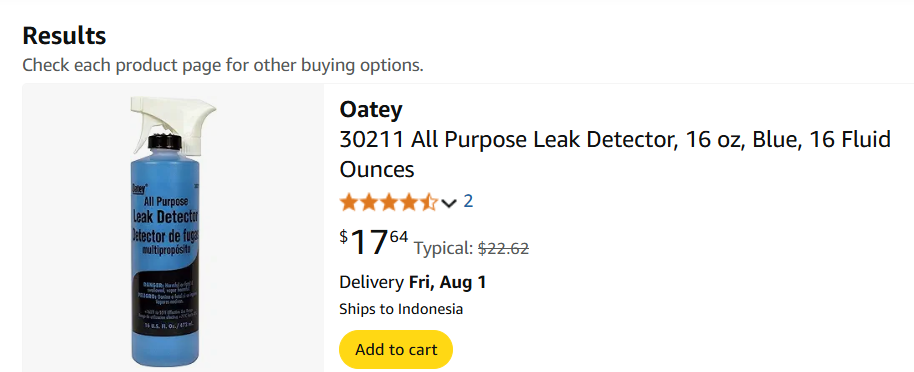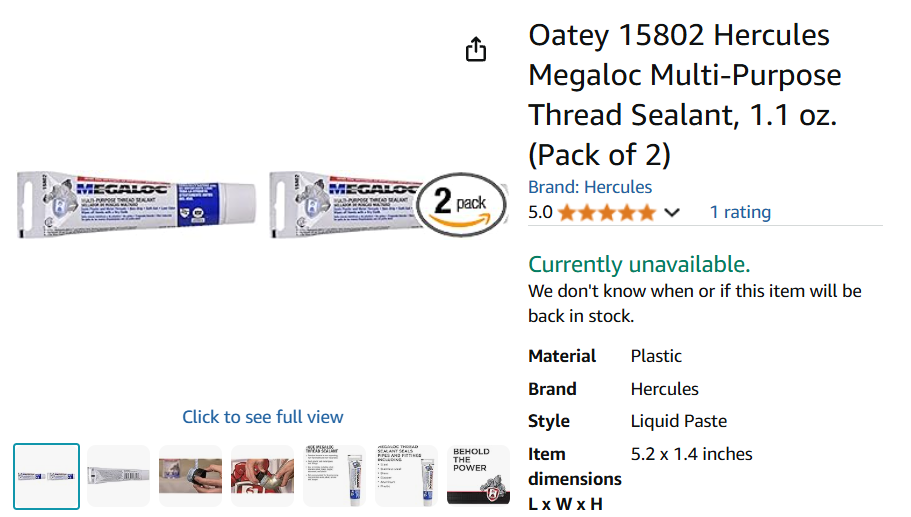

For gas systems, thread sealant is as important as the pipe. So, you need to always use the right gas sealant to make sure the joints are tight and safe.
But the confusion often starts in the hardware store. All the tapes look similar except for their color. If you’re in a hurry and grab the wrong one, it can be a sealant that breaks down when it touches propane.
But don’t worry. This guide will clarify which tapes and pastes are approved for gas work and how to apply them correctly. Let’s get started.

A gas sealant is a product used to prevent natural gas or propane from leaking out of threaded pipe connections.
You need this product because natural gas and propane can easily catch fire. Even a small leak can lead to an explosion, which can harm your family.
Gas sealants typically come in two forms. One is yellow tape made from polytetrafluoroethylene. The other is a paste made from synthetic resins, oils, and Teflon-like lubricants.
Paste compounds are best for irregular threads, while tape works well on standard threads where you can control the thickness.
Now, can homeowners use gas sealants themselves? It depends on where you live.
Some areas allow simple tasks like replacing flexible connectors, but others require a licensed professional for any gas work. But one thing is clear: using the wrong sealant can be dangerous.
Here are some reasons why choosing the right sealant for gas fittings is important:
Using the right gas sealant protects your family from explosions and poisoning by blocking leaks at threaded joints, the weakest part of gas lines.
If a small amount of natural gas or propane leaks every hour, the gas can build up behind stoves or under water heaters. A small spark from a pilot light or switch could set a house on fire.
Remember, all-purpose pipe sealant can dry out or break down when exposed to sulfur smell in fuel. And this causes small gaps that metal threads alone can’t fully seal.
As a gas system user, you’re responsible for fuel connections. An inspector can shut off your meter if they find improper sealant on a threaded joint.
Also, gas codes like NFPA 54 and the International Fuel Gas Code require yellow PTFE tape or UL/ANSI-listed pipe compounds on threaded fittings.
Plus, failing an inspection may lead to a red tag, resulting in extra fees, fines, and emergency plumber costs.
Most insurance policies don’t cover damage from rule violations. Claims will check that your gas fittings meet NFPA 54 and the International Fuel Gas Code.

If they find white plumbing tape or generic pipe dope on a burned joint, it’s considered incorrect installation, which can result in denied claims or neighbor damage claims.
Warranties for furnaces, water heaters, and boilers work the same way. Manufacturers require approved gas-rated thread sealant in their manuals.
Using the wrong gas-thread sealant or sticking with old favorites can be risky. Cheap sealants may dry out, shrink, or break down faster, creating small gaps.
These gaps can let fuel escape and build up unnoticed, reaching dangerous levels before you see any signs.
Remember, white plumbing tape and all-purpose pipe dope aren’t meant for constant contact with hydrocarbons.
A gas seal that looks perfect at first can fail if it can’t handle the chemicals in the fuel passing through. When it breaks, gas leaks out, much like a loose fitting.
Natural gas and propane smell strongly of rotten eggs due to added sulfur compounds. These chemicals can harm plumbing tapes and pipe dope.
They react with sealant chemicals, causing them to dry, crack, or turn sticky over time. Even if the joint feels tight, small gaps can develop, leading to leaks.
Spending a bit more on a gas sealant now can save money later. Small leaks waste fuel and increase costs, while persistent odors may lead to expensive repairs.
Gas leaks that ignite or cause carbon monoxide buildup might require replacing appliances or drywall. This cost far exceeds a $5 PTFE tape.

Not to mention that using unapproved sealants can also put your insurance and warranty at risk.
These are some types of gas sealant you can use, depending on your specific needs.
This gas sealant, made from pure PTFE resin, is a thin, porous film rolled onto a plastic core, with a yellow pigment.
PTFE’s ability to resist chemicals makes it good for use with wet natural gas and propane additives.
Wrapping it two or three times clockwise makes the tape softer, helps seal the threads quickly, and makes it easier to tighten.
Yellow tape is used for threaded gas line connections, and you can check if it’s sealed tightly by using a soap test. If bubbles form, there is a leak.

Pipe dope is a thick, brush-on paste made of oils, synthetic resins, and tiny PTFE or mineral fillers.
It keeps the seal soft and flexible, so it moves with the pipe during temperature shifts or vibrations.
It’s good for meter sets, rooftop units, and generator sets that need flexibility and filling gaps. But, you have to use it carefully, too much sealant can break off and clog the regulators later.
The elastic paste also blocks odors from mercaptan, moisture, and mild acids found in natural gas or propane. It creates a tight seal that works in temperatures from -50°F to 400°F.
Anaerobic thread sealant is a one-part liquid resin that remains fluid when exposed to air. When applied between metal threads and oxygen is blocked, it quickly hardens into a tough plastic.
This plastic then bonds to the threads, filling every tiny groove. The result is a seal that can handle higher pressure than household gas and won’t loosen when equipment turns on or off.
The cured polymer acts as a thread-locker. It prevents unions from loosening due to vibration. This is helpful on rooftop HVAC units or buried meter sets that may go years without inspection.

This gas sealant is a thick paste of PTFE powder and synthetic fibers like Kevlar in a non-hardening resin. It’s thicker than standard pipe dope.
The fibers fill thread gaps, and PTFE particles seal surface scratches, preventing gas leaks. When tightened, it forms a flexible, low-friction seal that resists loosening during pressure pulses.
Hybrid PTFE-fiber pastes often have UL or CSA fuel-gas approvals, work from -50°F to 400°F, and resist smells, moisture, and mild acids.
Now, with all those gas sealant types above, what should you consider when choosing one?
Match the sealant to the fuel. For natural gas and LPG, use “fuel gas” labeled products like yellow PTFE tape or CSA/UL-listed compounds.
Avoid white water-line tape or all-purpose dope not rated for gas, as they may leak hydrocarbons unnoticed.
Most residential gas lines run under 2 psi, where yellow tape or gas-rated dope seals effectively.
For larger systems like commercial boilers or standby generators, use yellow PTFE tape or heavy PTFE paste for higher pressures. Anaerobic resins also work well, with some rated up to 380 psi.
Outdoor meters, rooftop units, and vibration-prone appliances stress joints. Proper support reduces vibration, but sealing is vital.

Anaerobic sealants create a tough, wind- and shock-resistant ring. Gas-rated pipe dope remains flexible for a tight seal during movement. Correct use of yellow PTFE tape ensures a reliable, durable seal.
A quick label check is the simplest safety test. Look for safety marks like CSA, UL, AGA, or DVGW, which show the product has passed safety standards.
Also, check for a clear maximum pressure rating, indicating the highest safe pressure. If these are missing, the product isn’t officially approved for household gas use and may be unsafe.
In this article, we’ve explored what makes a gas sealant important and how to choose the right sealant for your gas systems.
You’ve also learned why choosing the right gas sealant matters. It keeps you safe, protects your warranty, and saves you money. A small effort for big benefits.
We hope this information helps. If anything is unclear or you’re unsure about doing the gas work yourself, feel free to contact us at Melbourne Gas Plumbing.


Fill the form below and we’ll get back ASAP!

MGP! Thank you for help, honest pricing and high quality work. Thank you to Joe for pricing and the boys involved for replacing my hot water tank and fixing my gas leak for a reasonable price. 5 star response, 5 star service and 5 star price.
Joe was great. Very professional and quick. Gas hot water heater needed replacing, he was honest and upfront about what our options were. System was sourced and replaced within a couple of hours.
Fantastic service very responsive Joe is highly recommended and works very clean and neat..... good job well done....very happy... will use again and again

At Melbourne Gas Plumber, we're here to handle all your gas plumbing needs throughout Melbourne. With over 40 years of experience, we bring extensive local knowledge and expertise to every job.
QUICK LINKS
OPENING HOURS
Open 24/7
